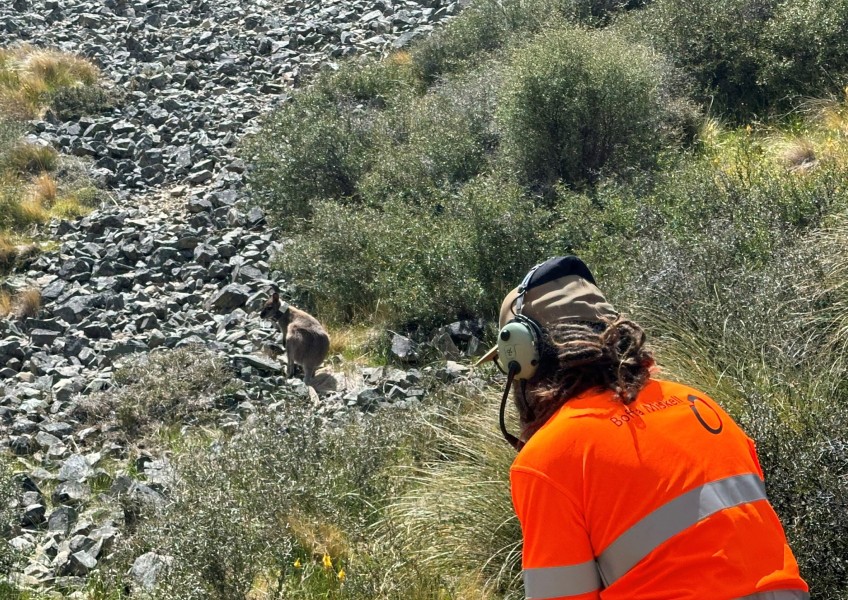Undercover wallabies potential pest control game changer

They have been dubbed 'Judas' wallabies - 10 animals captured by conservation staff, fitted with tracking devices, and released back to the wild to effectively dob in the location of their mates.
And the Otago Regional Council is reporting success with its first go at using them.
The regional council, charged with controlling the pest species and monitoring any spread of them from Canterbury south into Otago, says the initial bunch of 10 animals they have put GPS collars on have led hunters to many more.
The animals - all Bennett's wallaby, an invasive introduced species - were captured across sites in Waitaki and Mackenzie districts last year and fitted with the location device.
Last week, the regional council's aerial hunting team located nine of the 10 'spies', and were then able to kill 18 others of the species. Meanwhile, the 'spy' animals were left unharmed.
The final '10th' tracked animal was located too close to dwellings for the hunting team to safely pursue, but records show it has traveled 42 kilometres from its release site and is now in Otago.
The council is leading what will be a two-year research programme testing the usefulness of 'spy' animals as a tool in the battle against the fast-breeding pest, with support from Environment Canterbury and the Tipu Mātoro National Wallaby Eradication Programme.
The ORC's project lead is cautious about calling the method a success at this early stage, but is confident it is off to a promising start.
“While the results from this first hunt are encouraging, further hunts are still needed before we are able to fully assess whether this technique works,” Gavin Udy says in a statement.
“This first run is about getting out there and locating and eliminating any other wallaby around the spy wallaby and testing our methodology, and then integrating any improvements identified into future hunts."
The 'spies' will be left for the rest of the year to roam, in the hope they continue to lead hunters to other populations, until no more can be found.
"The first hunt went very successfully, and the team are looking forward to the next one.”
Using the 'spies' saves on-the-ground work, and that's good for bottom lines.
“Finding wallabies across large landscapes and difficult terrain, where there are few present, is labour intensive," Mr Udy says.
"Any wallabies that go undetected allow small breeding populations to form and grow and become established over time. This is why it is critical that we develop new cost-effective tools to find wallabies in these environments.”
The technique has been successfully used in the control of problem goat and tahr populations elsewhere in New Zealand.
The regional council has budgeted $110,000 over two years for the field work component of the research, with an additional $100,000 coming from the Tipu Mātoro National Wallaby Eradication Programme.
Meanwhile, Environment Canterbury is supporting the research through landowner consultation, DNA sampling and supplementary control work.
The research is being conducted under approved permits from the Ministry for Primary Industries and the Animal Ethics Committee at Lincoln University, with permission granted by landowners to release the wallabies.
According to the ORC there has been an increase in reported wallaby sightings in the past year, and people are asked to keep an eye out and report any animal, dead or alive, in a bid to stop the species establishing itself in the region.
The fast-breeding wallaby can cause significant damage to native bush, farms, crops, and commercial forestry, and is a threat to the region's biodiversity.
If weather conditions suit, the next hunt is planned for two weeks' time (week starting February 19).
Seen a wallaby? It can be reported online.
Main image (Supplied/ORC):Boffa Miskell project manager Brent Barrett releases one of the wallaby spies.



























